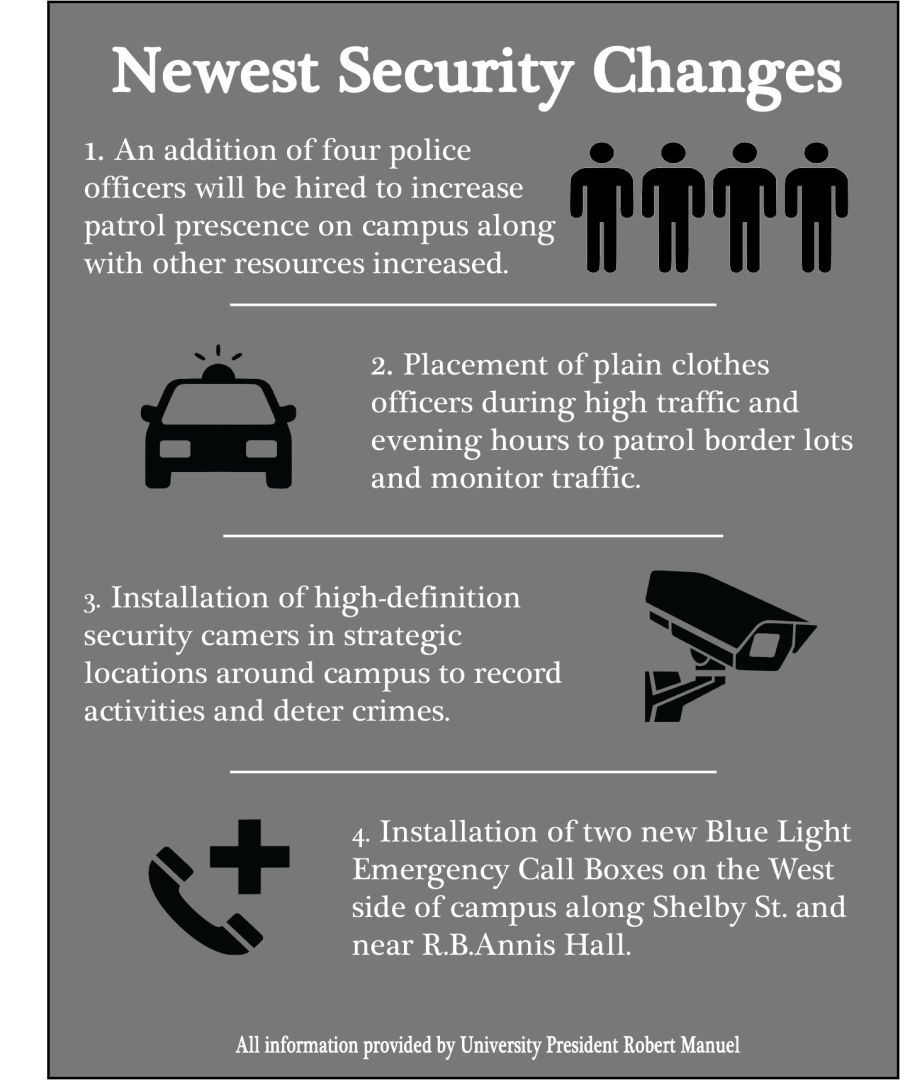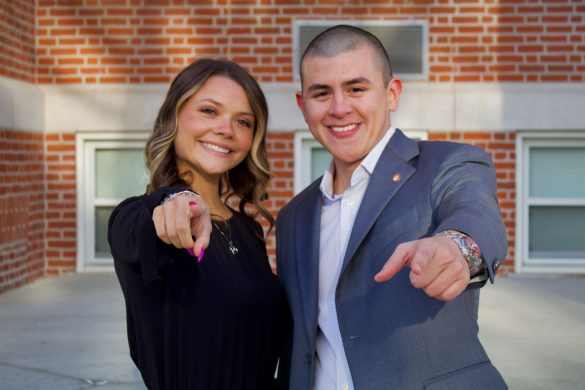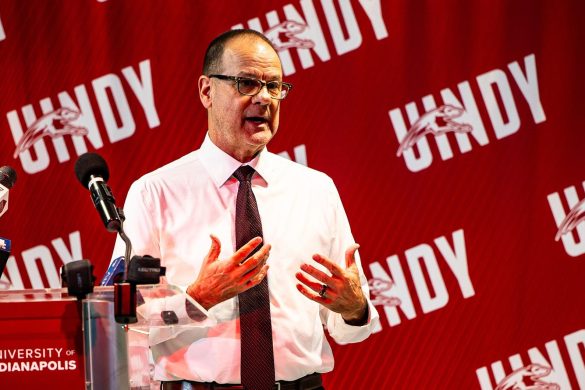University of Indianapolis President Robert Manuel announced via an email on Oct. 20, that he was expediting several safety and security measures. These changes include expanded resources for UIndy police, plainclothes officer postings, additional high-definition cameras for campus and the expansion of the Blue Light Emergency Call Box system to the west side of campus.
These changes all stemmed from several incidents that occurred on campus in the first three months of the current semester, according to Manuel’s email. On Oct. 19, the night before Manuel’s email was sent, there was an incident in which a non-UIndy affiliated individual was found with a gunshot wound, according to an email the next morning from Vice President for Student and Campus Affairs and Dean of Students Kory Vitangeli. This incident raised concerns in the UIndy community regarding security and safety on campus. Manuel said that he is grateful for the community’s conversations and that changes like the ones he expedited are constantly in the works. He said the campus should see physical changes happening very rapidly.
“What you’re also going to see are the organizational changes, the communication changes, these meetings [about campus security], occur over the long haul so that we can continue to make alterations to the public safety strategies that have been on the shelf for a very long time but need modifications, so that they keep up with the changing environments that exist in our world,” Manuel said. “That is part of how universities maintain their relevance and they keep themselves up with the public safety needs of today.“
According to Manuel, UIndy has two major committees that oversee safety and security measures on campus, both of which filter into the Risk and Compliance Committee. He said that these committees are consistently looking for ways to keep the campus safe as the Indianapolis crime rate rises and that the measures he accelerated came from those committees’ recommendations.
“What I did was look at the general conversation going on in our community and the concern that everybody had and said, ‘Let’s look at where we are in those conversations and listen to the recommendations that were going to come forward and say which ones of those should we expedite, and move forward,’” Manuel said.
The first of the safety and security measures announced in Manuel’s Oct. 20 email was increased resources for the campus police department, which includes hiring four more police officers. According to UIndy Chief of Police David Selby, the police force currently consists of 14 officers, counting himself, an assistant chief, a detective and a lieutenant. Selby said the addition of four more officers who can patrol campus and the surrounding areas will be very beneficial to their efforts.
“When you talk about a university community, it’s more than just campus. It’s those people around us,” Selby said. “We try to patrol around the campus to help push stuff back. And so we’re going to be able to continue to do that but yet have people in the parking lots as well. So along with that, we’re able now to start hiring some part-time people to help fill in where we need them as well.”
The second of the announced measures was the strategic placement of plainclothes officers in border parking lots at specific times to monitor traffic. According to Selby, the plainclothes officers, who will be cadets or student employees, will not get directly involved with incidents but rather will carry radios that will call the main police force. The UIndy Police Department has used plainclothes officers in the past, Selby said, mainly when there were catalytic converter thefts rampant on campus. According to Manuel, the recommendation for more plainclothes officers came from Selby and Vitangeli.
The third measure announced in Manuel’s email was additional high-definition cameras posted in specific locations on campus as a crime deterrent. According to Selby this has been something that he and others in the campus community have wanted. He said that the cameras are going to be issued in two phases: first on buildings and the second on poles in parking lots. The delay is due to the steps necessary to post a camera in the middle of a parking lot.
The fourth measure announced in Manuel’s email was the addition of two more Blue Light Emergency Call Boxes on the west side of campus. Selby said that while all of the changes and new measures are things any police chief would want, being a private university limits UIndy’s capabilities.
“Everything in the private schools [is] tied to tuition dollars. I could go to you and say, ‘I think it’s a good idea.’ If nothing happened, you’d say, ‘Well, I don’t want to raise my tuition,’” Selby said. “So I think everybody, not just me, everybody would want one of these things. It’s doing a little bit at a time…. I just want to emphasize that safety and security has always been an issue here. And we’ve always been trying to move forward with things. It’s just [that] things are expensive.”
Another area of concern at the university has been the timing and use of Watchdog and its alerts, the system UIndy uses to alert students, faculty and staff about emergencies and other issues on campus. According to Selby, the system currently in place works fine, but competing with the emergence of apps such as the Citizen app, through which the UIndy community can receive immediate alerts when events occur, is difficult. He said that he and his team are looking into adding additional functionality to the current system to mimic those services. He said with the current system, two considerations affect when an alert is sent out.
“There are two things that we have to be concerned about [when] sending out a Watchdog—an immediate notification versus a timely warning,” Selby said. “If there’s something that happens on campus that endangers the campus, then we send something out immediately. If there’s things that are happening on campus that’s not an immediate danger, we have quite a bit of time that we can find out accurate information and send it out.”
Manuel said that public safety leadership and officers from the City of Indianapolis and Indiana University have come to campus to discuss public safety strategies and practices moving forward. He said these types of meetings are valuable for not only UIndy but for the city and for IU.
“It’s critical before the tragedies of last week; it’s critical after those tragedies. It’s critical to make sure that we are always in community with experts to ensure that we understand best practices as we move forward,” Manuel said. “These meetings have happened in the past, and they’ll continue to happen in the future. Our hope is that—as we learn from IU, and IU learns from us and we learn from the city—that we can forge those relationships to continue to have practices that ensure we have a safe campus.”









